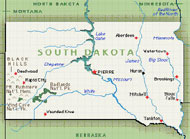| 4.5 | HAZARDOUS MATERIAL INCIDENT RESPONSE |
| 4.5.0 | ITS shall include a Hazardous Materials (HAZMAT) Incident Response (HIR) service. |
| 4.5.2 | HIR shall provide an Operation Focal Point (OFP) for initiating appropriate responses. |
| 4.5.2.1 | OFP shall be capable of being implemented as either a centralized dispatch or several de-centralized dispatch units or vehicles. |
| 4.5.2.2 | OFP shall provide the capability for existing dispatch centers to receive the calls, determine response requirements, and route distress calls to predesignated responding agencies. |
| 4.5.2.3 | OFP shall provide the capability for operators to coordinate with other agencies and response services to include, but not be limited to, the following: |
| 4.5.2.3(a) | State and/or local transportation officials. |
| 4.5.2.3(b) | Police departments. |
| 4.5.2.3(c) | Highway patrol. |
| 4.5.2.3(e) | Emergency medical services. |
| 4.5.2.3(f) | Environmental protection agencies. |
| 4.5.2.3(g) | HAZMAT teams. |
| 4.5.2.3(h) | Towing and other "courtesy" services. |
| 4.5.3 | HIR shall include a Communications (COMM) function. |
| 4.5.3.3 | COMM shall provide the capability for data to be sent from any location covering all areas of the contiguous United States. |
| 4.5.3.4 | COMM shall provide the capability for linkages/interfaces with various existing networks. |
| 5.0 | EMERGENCY MANAGEMENT |
| 5.2 | EMERGENCY VEHICLE MANAGEMENT |
| 5.2.1 | EVM Service shall include an Emergency Vehicle Fleet Management System. |
| 5.2.1.1 | Emergency Vehicle Fleet Management System shall maintain the availability status of relevant emergency vehicles. |
| 5.2.1.2 | Emergency Vehicle Fleet Management System shall determine the emergency response vehicles best suited to respond to an incident. |
| 5.2.1.3 | Emergency Vehicle Fleet Management System shall dispatch the appropriate emergency response vehicle (s) to the incident. |
| 5.2.2 | EVM Service shall include a Route Guidance System. |
| 5.2.2.1 | Route Guidance System shall maintain real-time information on traffic conditions in urban and rural areas, emergency response vehicle locations, and emergency response vehicle destinations. |
| 5.2.3 | EVM Service shall include a Signal Priority System. |
| 5.2.3.1 | Signal Priority System shall maintain real-time information on signal timing, emergency vehicle locations and emergency vehicle routing. |
| 8.0 | MAINTENANCE AND CONSTRUCTION MANAGEMENT |
| 8.1 | MAINTENANCE AND CONSTRUCTION OPERATIONS |
| 8.1.1 | Maintenance and Construction Operations shall provide a Maintenance Vehicle Fleet Management (MVFM) function to schedule and dispatch, monitor and track location, and monitor operational condition and maintenance requirements of public and contracted fleets of maintenance, construction, and specialized service vehicles. This function includes interactions among Traffic Managers, Supervisors, Dispatchers, Field Crews, Construction Crews, Vehicle Maintenance Crews, Equipment Maintenance Crews, Weather Services Organizations, and Information Service Providers. |
| 8.1.1.1 | MVFM shall be capable of monitoring and tracking the locations of public and contracted fleets of maintenance, construction, and specialized service vehicles to provide current location and status information. |
| 8.1.1.1.1 | MVFM shall be capable of monitoring and tracking the locations of fleets of maintenance, construction, and specialized service vehicles, including but not limited to: |
| 8.1.1.1.1(e) | Roadway service patrols |
| 8.1.1.6 | MVFM shall be capable of providing dispatchers and operators of maintenance, construction, and specialized service vehicles with information regarding potential and actual roadway problems. |
| 8.1.1.6.1 | MVFM shall provide information to dispatchers and vehicle operators, including but not limited to: |
| 8.1.1.6.1(b) | Incidents |
| 8.1.4 | Maintenance and Construction Operations shall provide a Roadway Maintenance Conditions and Work Plan Dissemination (RMCWPD) function to provide Intra- and Inter-agency coordination of work plans. This function includes interactions among Traffic Managers, Supervisors, Planning Agencies, Public Safety Organizations, and Information Service Providers. |
| 8.1.4.1 | RMCWPD shall coordinate information on planned maintenance and construction activities, including work zone information, and unplanned remediation activities, such as inclement weather responses, so that routing, scheduling, and resource allocation can be accomplished. |
| 8.1.4.2 | RMCWP shall support inter-agency coordination of response and scheduling of resources for significant events with broad impact, like natural disasters, major incidents, and large planned or seasonal events. |
| 8.1.4.3 | RMCWPD shall coordinate information with other transportation agencies, including but not limited to: |
| 8.1.4.3(a) | Public Safety |
| 8.1.4.3(b) | Emergency Medical Management |
| | |












